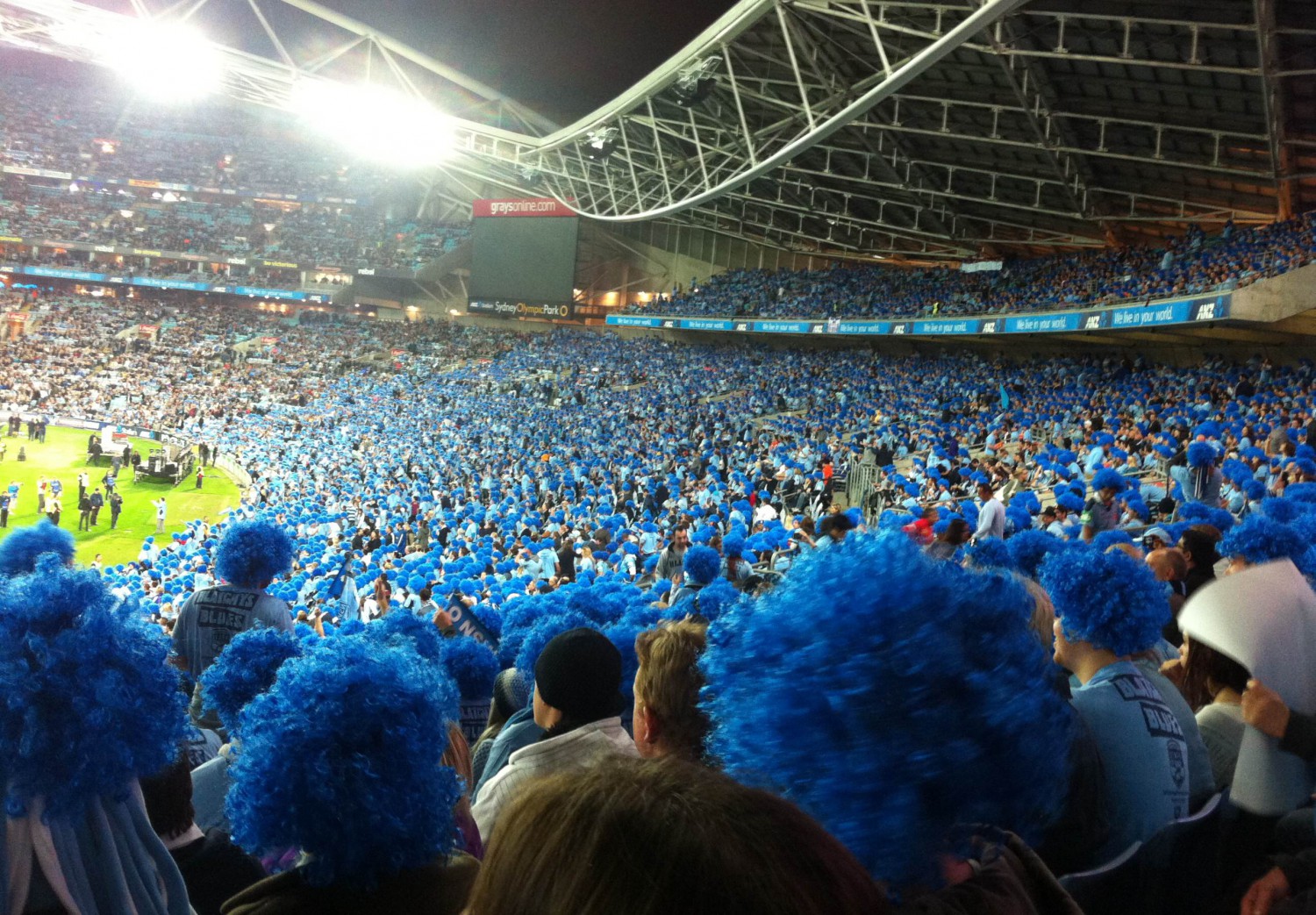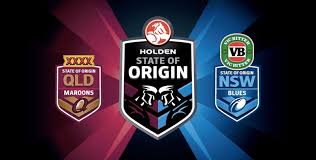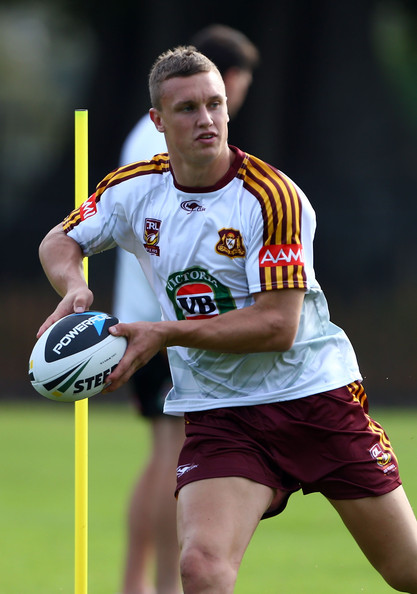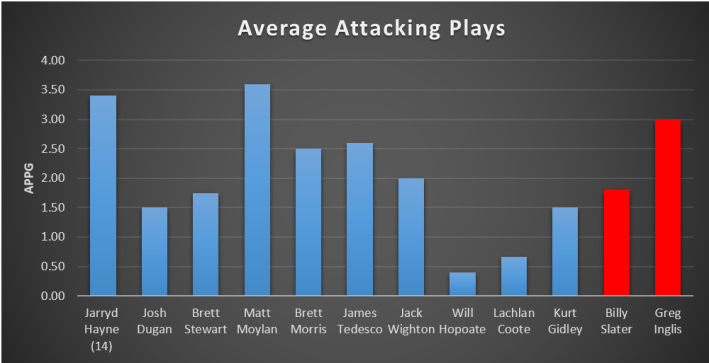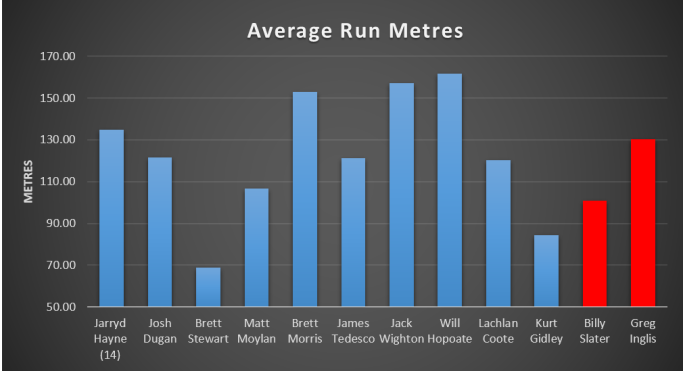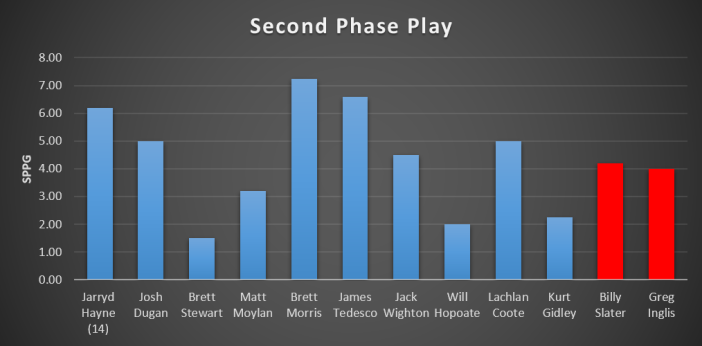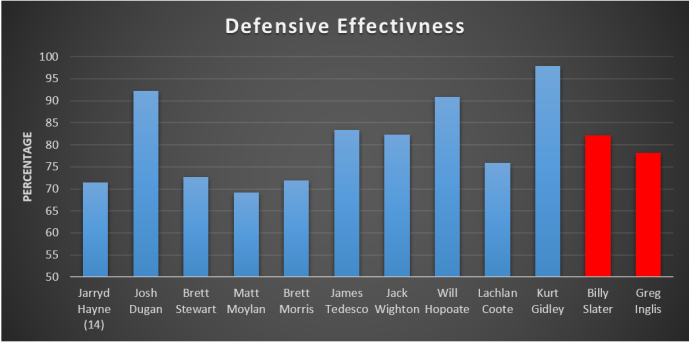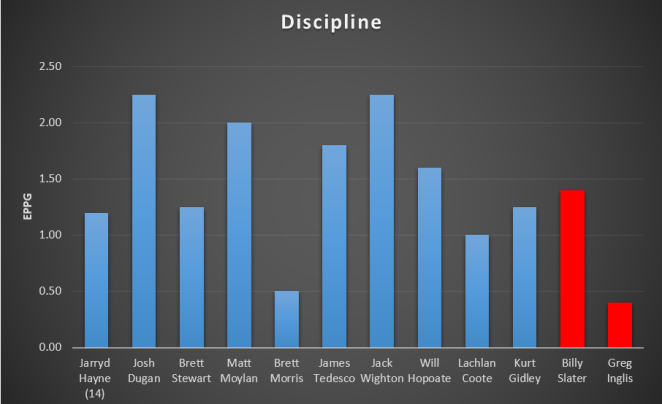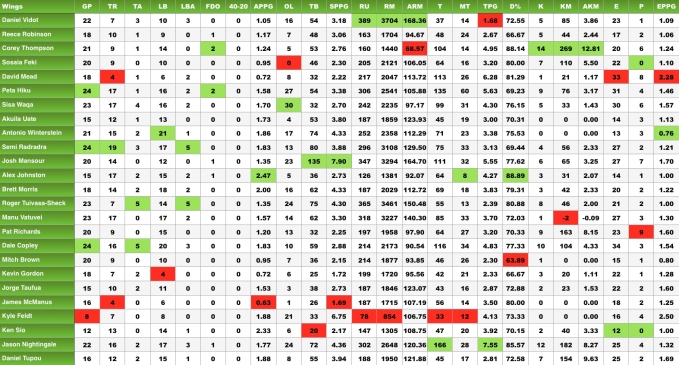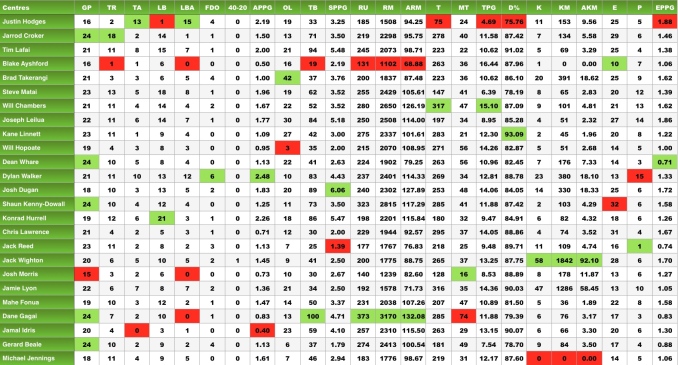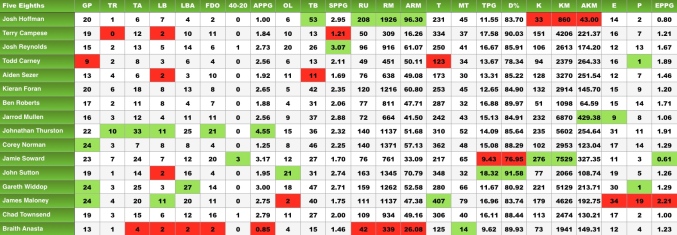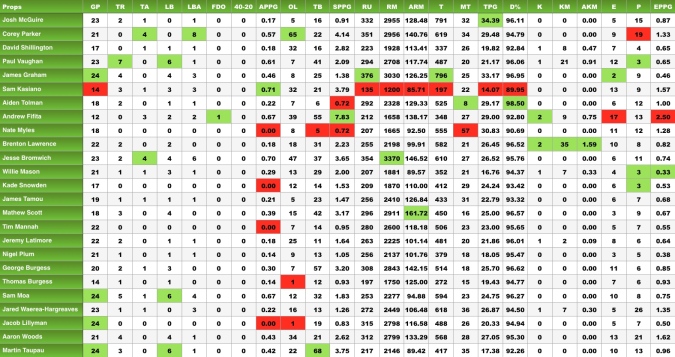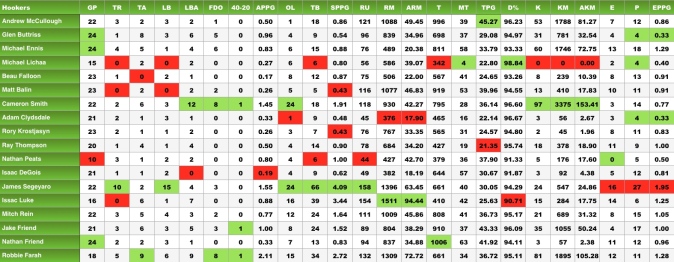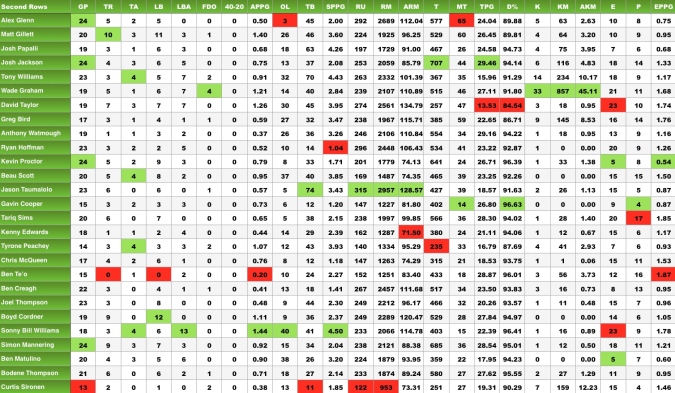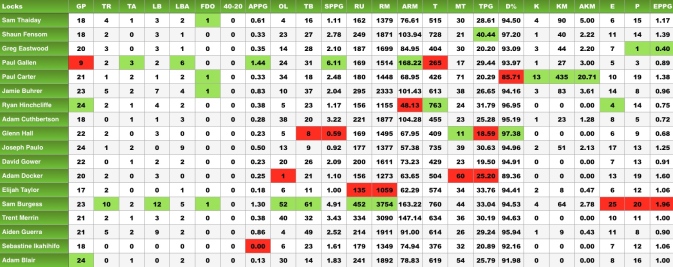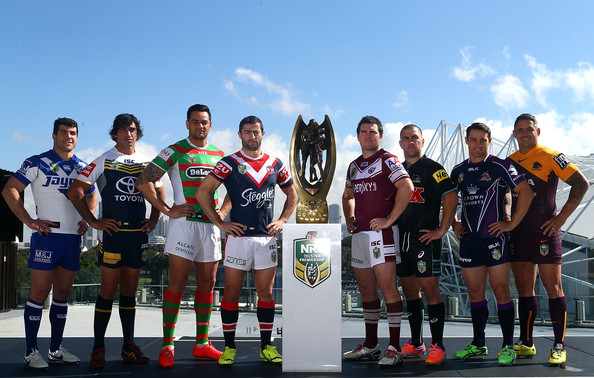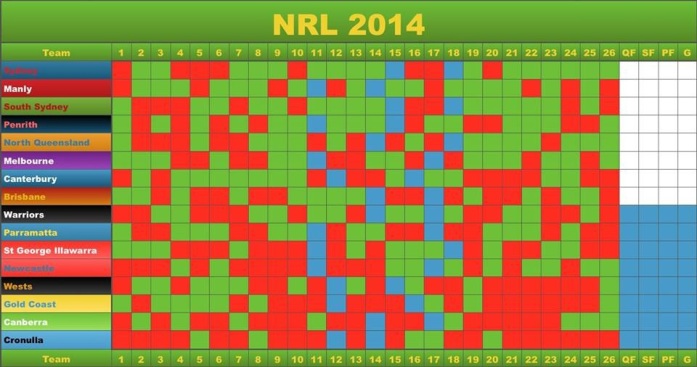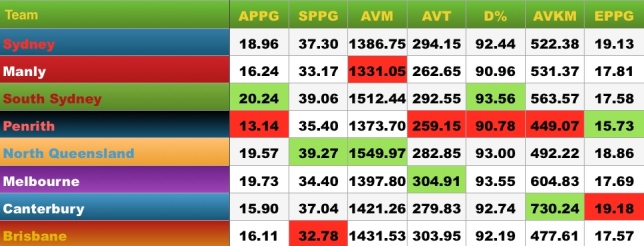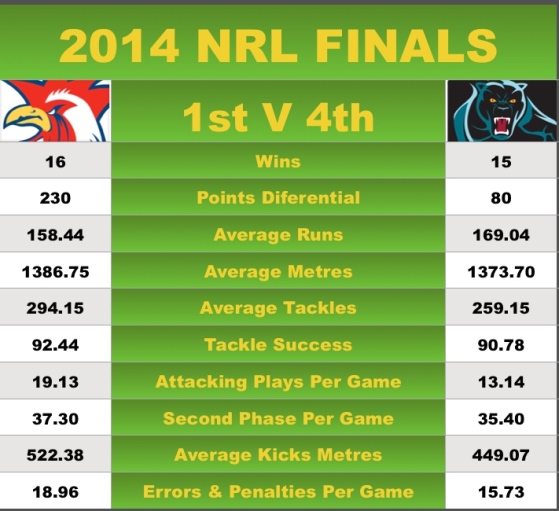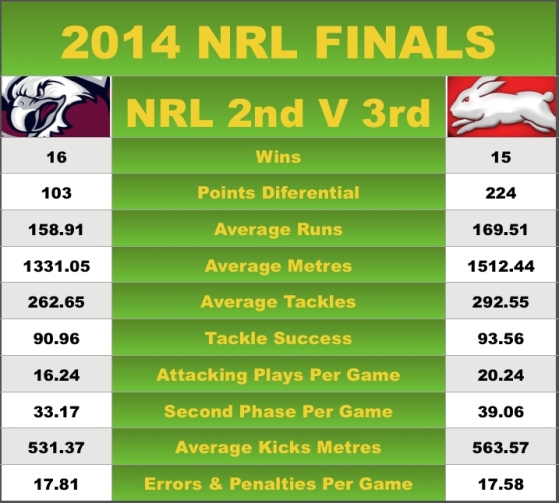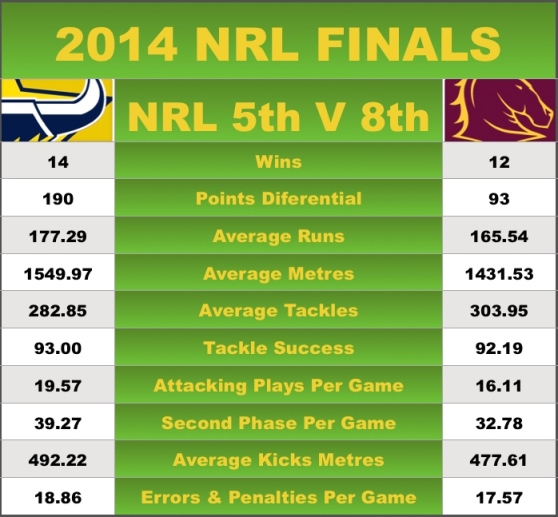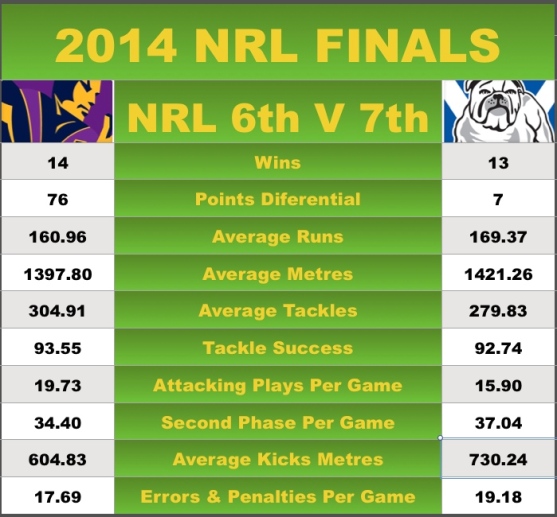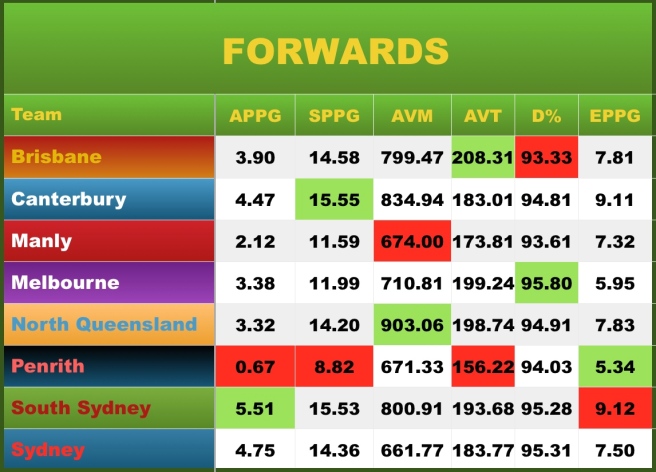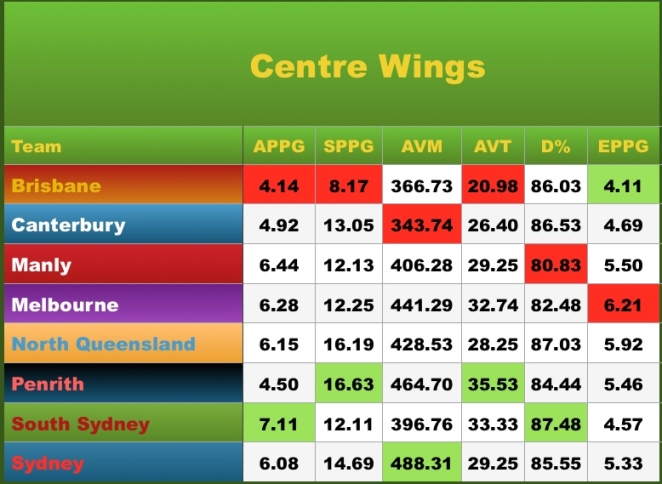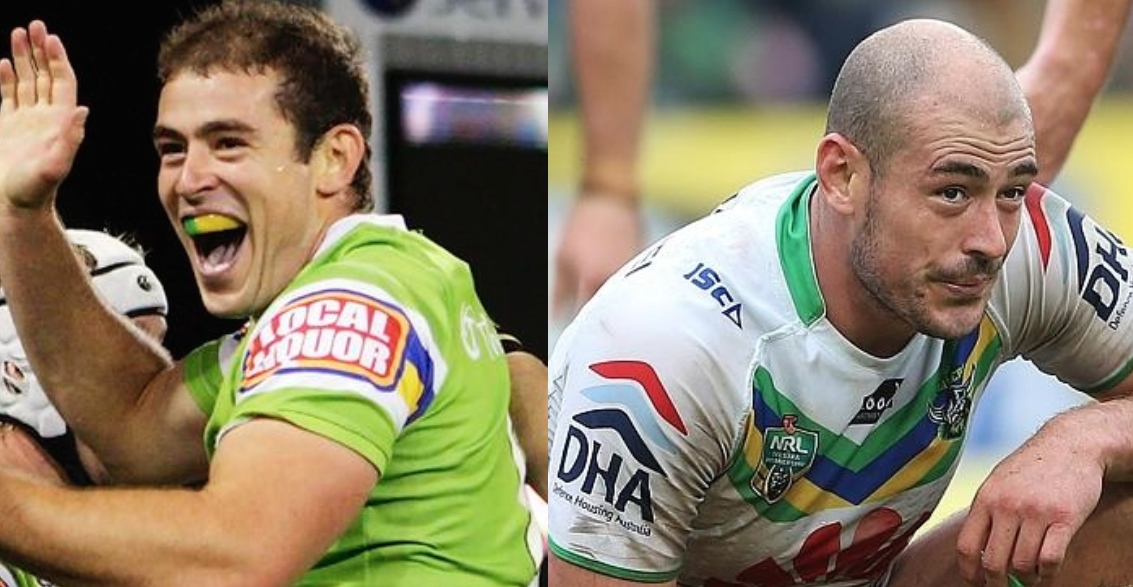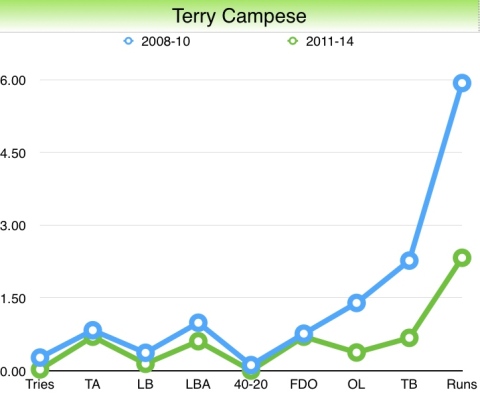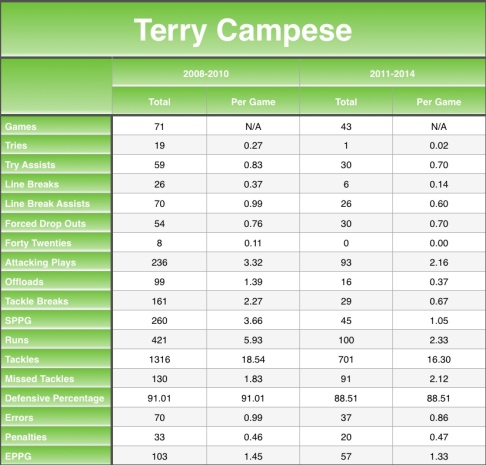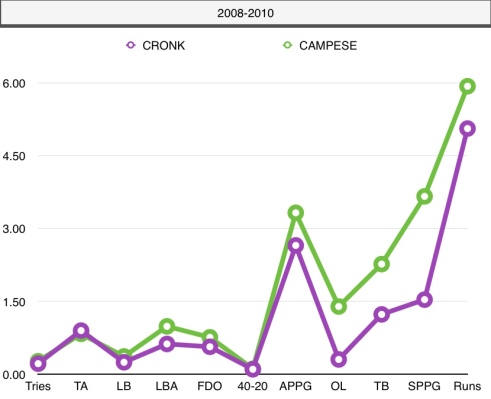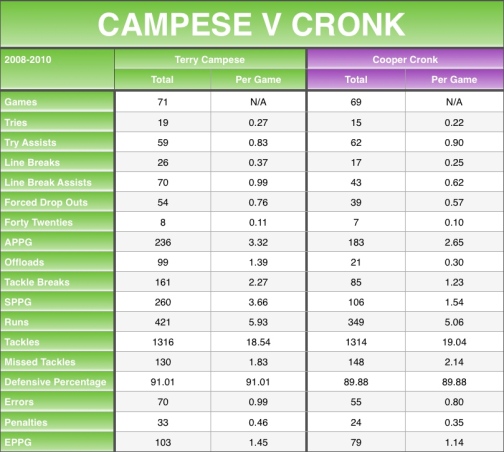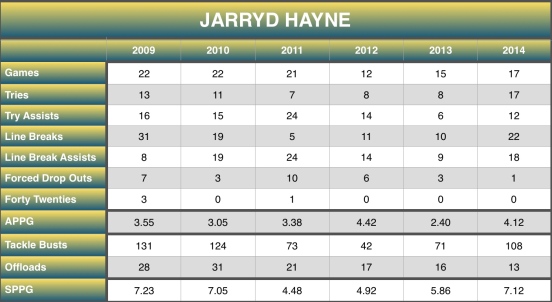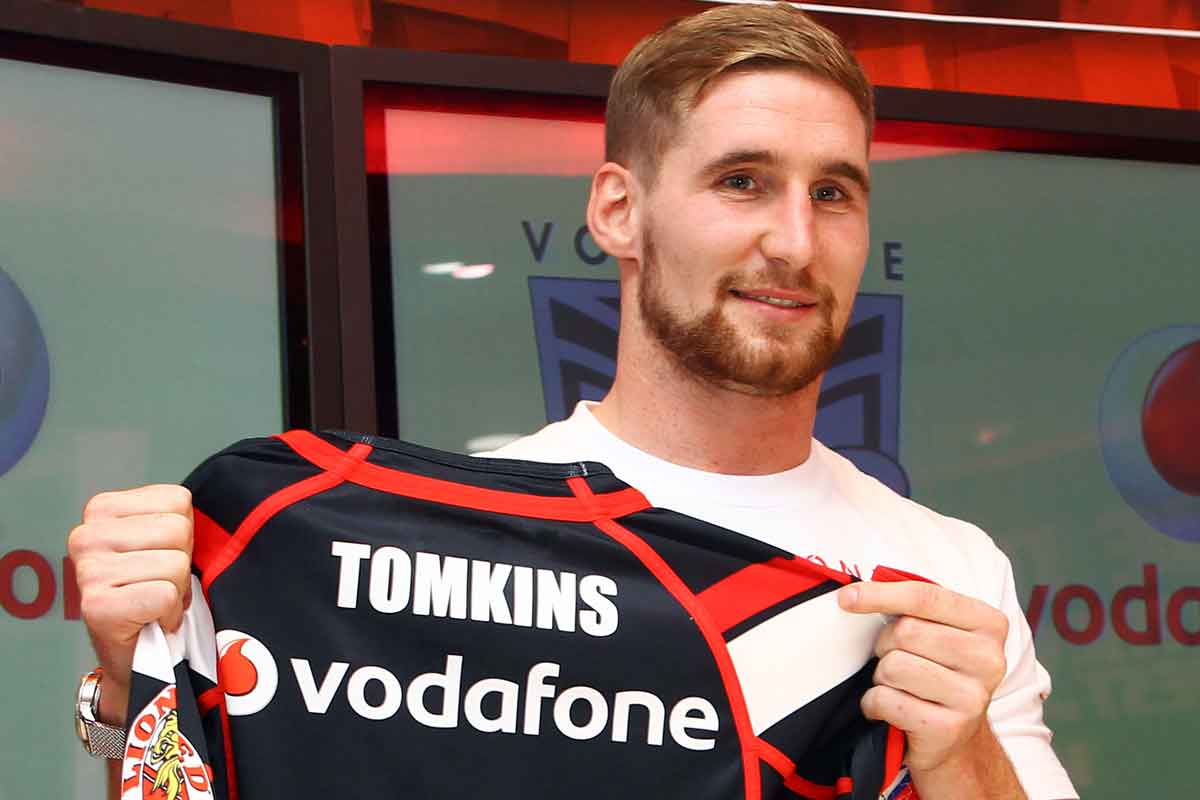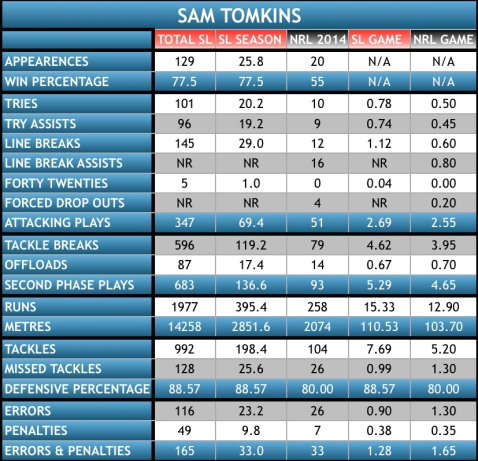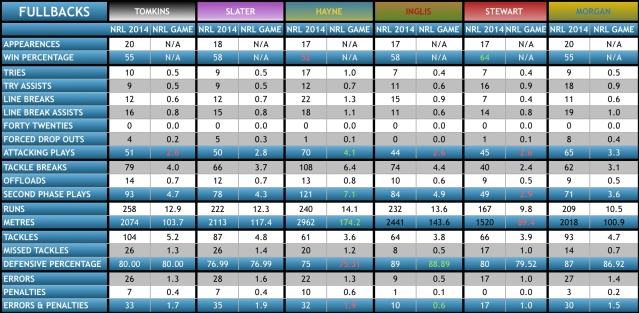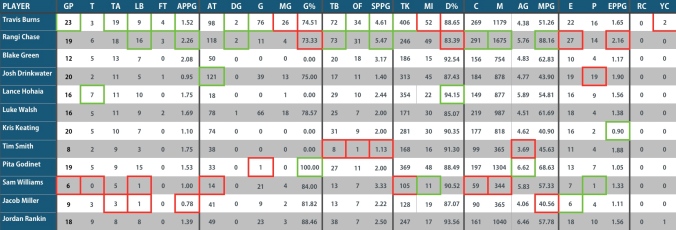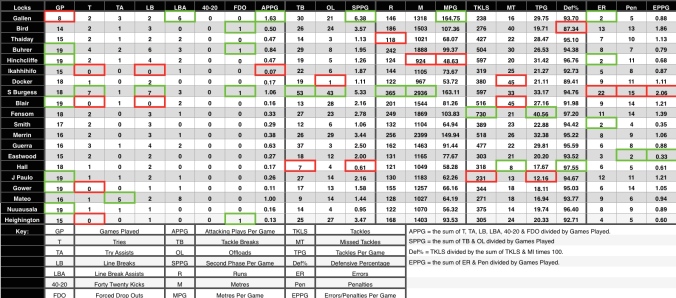Trying to provide a meaningful matchup of two teams is no easy task; especially for someone who isn’t a statistician. I shall do my best anyway. As expected the Maroons average age is greater than that of the blues. There is little difference in height and weight; with the average Maroon towering above their Blues opponent by 0.6cm. The Blues have a slight advantage in the weigh in. The first disparity becomes apparent in the Origin experience department, with Queenslanders averaging twice as many origins games per player (14.6 to 6.8). The Maroons squad has suffered fewer disruptions on the park in 2016; the only man to have missed any game time this year is Corey Oates; who missed one game earlier in the season. The Blues by comparison have missed 27 games this year due to injury and suspension. In other words Queenslander’s have participated in 99% of possible games this year compared to the New South Welshman who have only played 85%.
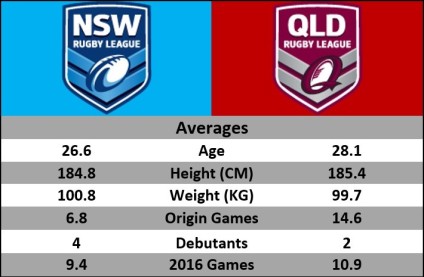
Attack
The following stats have been derived from 2016 season totals and adjusted to try and reflect what could possibly be produced in a single game performance per team; it is far from perfect, but it might reveal some interesting talking points. What I mean by adjustment is when the stats are pooled together and averaged they won’t reflect what is possible in a single team performance. For example NSW players have played 26 less games then QLD players, therefore, there will be a discrepancy between the two teams. Another area that requires adjusting is the total minutes available per game. For example: when the averaged minutes played per player for each team are summed into team totals, the Blues squad average 1190 minutes per game and the Maroons average 1203; however, there is only 1040 available playing minutes in an 80 minute game (13 X 80 = 1040). To adjust these two factors I broke both squads into 2 groups: the backs (1-7 and 9 assuming both Hookers will play 80 minutes) and the forwards (8, 10-17). I assumed that all the backs would play 80 minutes; giving them 640 of the 1040 available minutes. The forwards would have to share the remaining 400 minutes between the 9 of them. All categories were adjusted to reflect the maximum possible games that could have been played this season, as well as the maximum possible minutes available per game. A good example is average metres per game. If you summed the average metres per game of each NSW player you end up with 2013.5 total metres per game; which is not realistic because to get that figure there needs to be an additional 150 playing minutes per game. So when adjusted for maximal games and possible minutes the 2013 metre figure comes down to 1680 metres per game. That figure is still high for an average team, but this is a rep team and if NSW has anything it is metre eating forwards. All the figures below have had the same adjustment applied to them.
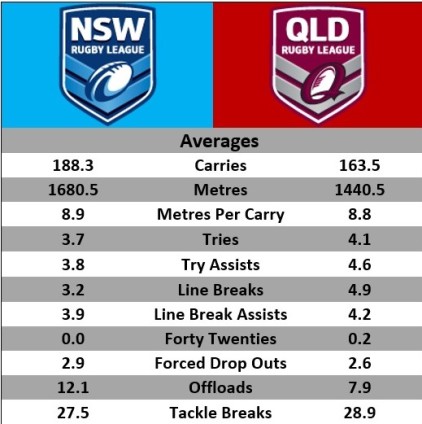
I have done this comparison for a number of years and it has always looked pretty similar. NSW tend to have the advantage in metres per game, as well as offloads and often tackle breaks; Queensland tend to be on top in every other attacking category, especially forced drop outs. This year that single figure has gone the way of NSW (2.9 to 2.6). Forcing repeat sets has been lacking for NSW year in year out. For example the year James Maloney and Mitchell Pearce were selected to play for NSW they had accumulated the fewest repeat sets of any halves combination in the NRL up until that point of the season. They did go on to win the competition that season so… make of that what you will. The addition of Adam Reynolds, who has 8 repeats from 6 games in 2016, gives the Blues a pressure building weapon that they have sorely missed.
Defence
The adjustments were also applied to the defensive and discipline statistics below and they too reveal a pattern that I have seen over the last few years; the Maroons tend to average more tackles, miss fewer, and produce fewer errors/penalties. The physical destruction of the Blues in last years decider was built on the back of a negative mindset that the Blues would lose the penalty count regardless; which, as we all witnessed, lead to one dumb grubby decision after another, which ultimately lead to the their systematic slaughter at the hands of an experienced professional Maroons team. So with that being said penalties and errors could hurt NSW again.
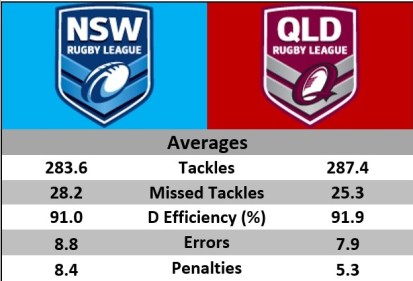
A Broader Comparison
Over the years I have tried to find ways to compare teams on the whole and it has proven difficult, because the NRL is notoriously bad a releasing useful statistics. Below is a few statistics I use to compare how players. APPG = Attacking Plays Per Game which is the sum of Tries, Try Assists, Line Breaks, Line Break Assists, Forty Twenties and Forced Drop Outs, divided by total games; SPPG = Second Phase Per Game, which is the sum of Offloads and Tackle Breaks, divided by total games and EPPG = Errors Penalties Per Game, Which is as the name suggest the sum of Errors and Penalties divided by total games. Make of them what you will.
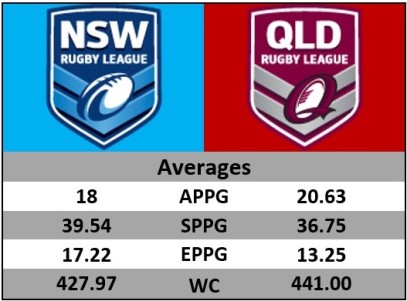
The final figure WC is a new one I have been playing with to try and compare the whole team’s performance. WC stands for Weighted Contribution and it is a similar points system to Super Coach: however, every statistical category has been given a weighting on top of the points given, or taken away for each action. I have determined the weighting by going through 10 seasons of NRL team statistics and recording how often the top 8 teams in each category actually finished in the top 8 at the end of the season. The weighting or multiplication factor produced was from 0 to 1. For example over the 10 seasons 72% of the top Try scoring teams finished in the top 8; compared to offloads where only 47% of the top Offloading teams finished in the top 8. So in the final calculation Tries received a higher weighting then Offloads. So as in Super Coach each Try is worth 17 points and then when the multiplication factor of 0.7 is applied the Try is actually worth 11.9 points. The same applied to Offloads, each being worth 4 points and when the factor of 0.45 applied its worth drops just under 2 points. This process has been applied to all catagories and then added together. Another deviation from the Super Coach system is Metres and Runs have been included instead of 2 points per Hit Up greater than 8 metres and 1 point for less than 8 metres. Points taken away for errors and penalties have also increased, because I believe they are not appropriately weighted by Super Coach who only minus 2 points per Error and Penalty. I tested the figure against 10 NRL seasons to see how often the top 8 highest scoring teams finished in the end of season top 8 and roughly 75% of the top scoring teams finished in the top eight; not perfect, but not bad, there are allot of ways the figure can be improved. Using the WC figure QLD come out slightly ahead 441 to NSW 428. Let’s hope last year’s flogging was merely an anomaly and we get the contest Origin deserves.
For more stats visit Rugby League Stats
